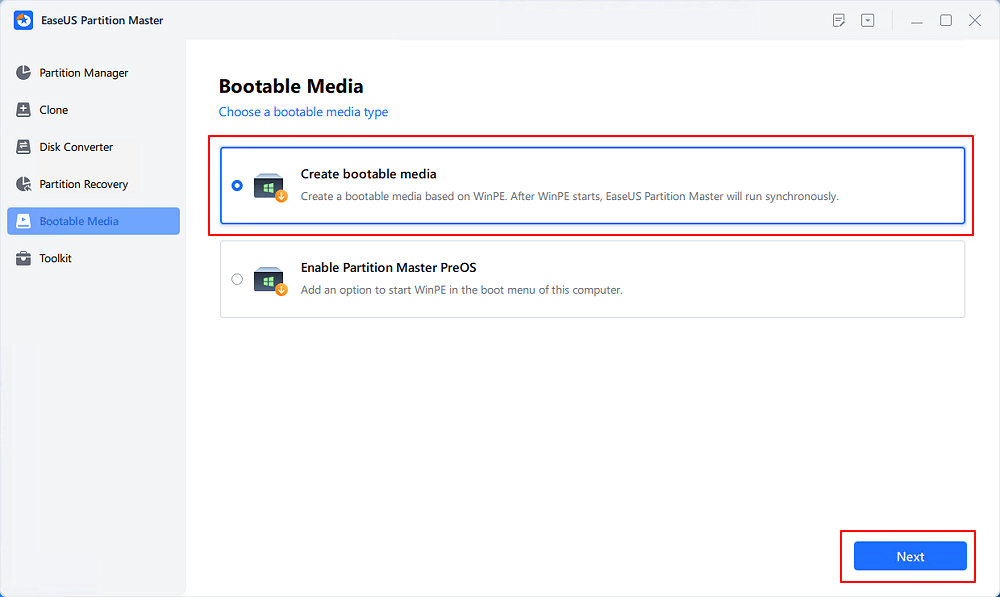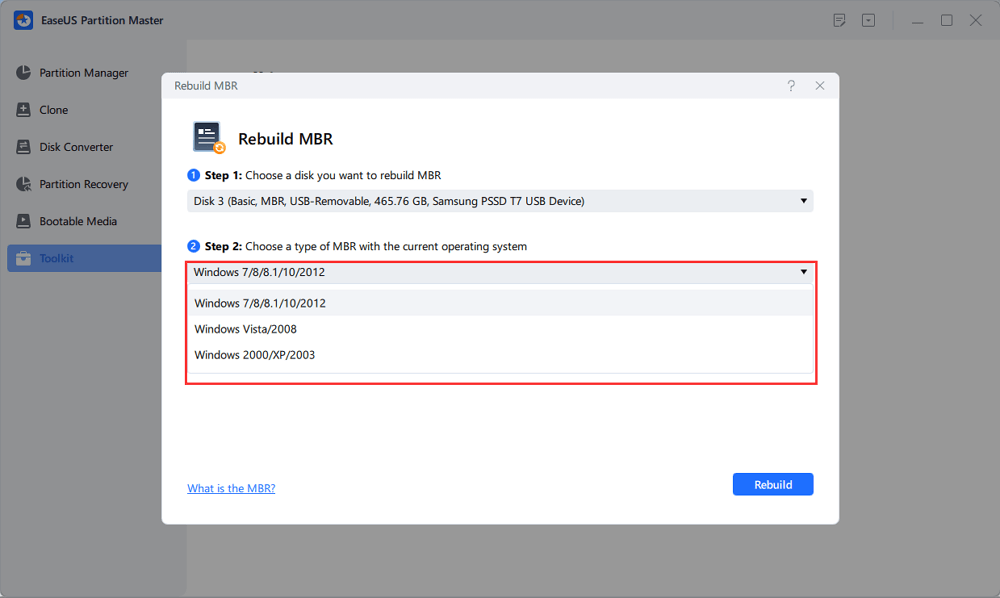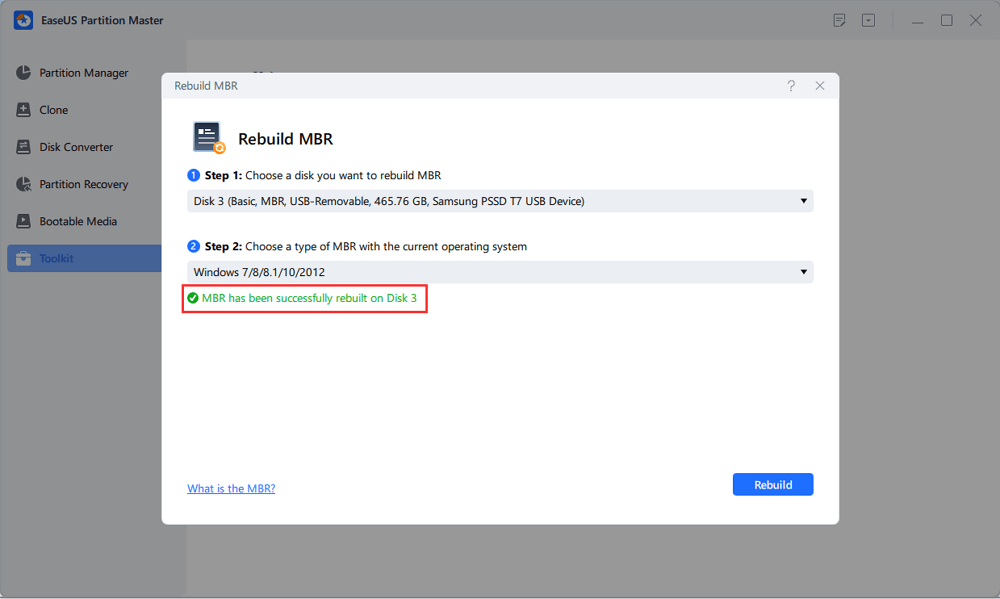Start Your Free Trial!
Sign up to our newsletter, stay updated on news and exclusive offers from EaseUS. Don't worry, if you change your mind, you can unsubscribe at any time, free of charge. We value your privacy (Privacy Policy).
Page Table of Contents
How to Fix Boot Drive Not Showing Up In BIOS?HOT
Why Boot Drive Not Showing Up In BIOS?HOT
ConclusionHOT
FAQs About Boot Drive Not Showing Up In BIOSHOT
About the Author
Hot Topics
Updated on Apr 28, 2025
The BIOS (Basic Input/Output System) is the firmware responsible for initiating your PC's operating system upon startup. Through BIOS, you can configure boot priority in alignment with your preferences. If occasionally, issues arise where the Windows boot drive is not showing up in BIOS; it can prevent booting up your Windows system.
Why does this issue emerge, and how can you efficiently fix it? In this post, EaseUS offers a comprehensive solution guide, presenting various strategies to solve the problem.
To fix the boot drive not showing up in BIOS, restart your computer to observe any improvements. If the issue vanishes, you're set. If not, learn the below methods.
How to Fix BIOS Recognizes SSD But Won't Boot
Troubleshoot why BIOS recognizes SSD but won't boot to learn effective fixes & solutions to resolve this issue and get your system running smoothly.

Loose physical connections and corrupt USB ports can lead to the "hard drive not showing up in BIOS" problem. When facing this, you should check USB cables and ports. Test another USB port or change a cable to provide a proper boot drive connection.
A corrupted or misconfigured Master Boot Record (MBR) could be the culprit. EaseUS Partition Master provides a dedicated feature to rebuild the MBR, fixing this critical element and resolving your boot drive visibility problem. This method is incredibly effective in fixing MBR-related issues.
Follow the steps to rebuild MBR:
Step 1. Create a WinPE bootable disk

Step 2. Boot EaseUS Partition Master Bootable USB
Step 3. Rebuild MBR



EaseUS Partition Master is a product with excellent compatibility that can fix any error that requires MBR repair, such as MBR error 1 and more of other situations:
If you have encountered similar errors, you can also seek help from this product.
Sometimes the motherboard may turn off the unused USB ports in BIOS. As a result, this error arises "Windows boot drive not showing up in BIOS." Follow these steps to enable USB in BIOS:
Step 1. Turn on your PC, and enter the setup utility instantly by pressing a relevant hotkey.
Note: Hotkeys can be different and depend on your PC's model. It could be F1, F2, F10, F12, Del, or Esc. Look for on-screen prompts for the exact BIOS entry key on your computer.
Step 2. Once you're into the BIOS, go to "Advanced."
Step 3. Move to Onboard Devices/Integrated Peripherals and hit the "Enter" button to continue.
Step 4. Choose "USB Controller" and adjust the setting to "Enabled" using the appropriate key press.

Step 5. Hit F10 to save modifications, and restart the system to check if the problem is resolved.
Read Also: Format Hard Drive from BIOS Windows 10
You can try to restore BIOS to default settings to fix the issue. To perform this task, follow the steps:
Step 1. Enter your PC's BIOS settings.
Step 2. Locate the option that corresponds to restoring "Setup Defaults." This may appear as Load Default, Load Setup Defaults, Load Default Settings, Load BIOS Defaults, or Load Optimal Defaults. Choose this option and press Enter to navigate to the Setup Confirmation window.

Step 3. Select "Yes" to confirm in the Setup Confirmation window.
Step 4. After this, your PC will be restarted, and you can see if it boots up successfully.
This method brings us to the forefront of fixing errors via an excellent solution. Here is EaseUS Partition Master, which comes first with its file system error check feature. This feature recognizes and repairs file system errors that can cause the "boot drive not showing up in BIOS" issue. Let's explore how this method can contribute to resolving the concern and restoring normal functionality to your system.
Follow the operational steps below:
Step 1. Right-click the target partition that may have a problem.
Step 2. Choose "Check" > "Check File System".
Step 3. In the Check File System window, check the "Try to fix errors if found" option by clicking the "Start" button.
Step 4. Please wait patiently. After the process, you can click the "Finish" button to exit the window.
EaseUS Partition Master is one of the best hard drive repair tool, and it can even repair Windows 10 from USB with a quick and easy guide. For more information, click the buttons:
If the issue of "boot drive not showing up in BIOS" remains mysterious despite your efforts with the techniques mentioned above, it could signal a more deep concern, potential physical damage to your boot drive. To tackle this hurdle, you can replace your ailing boot drive with a fresh SSD or HDD to restore your system to its normal condition.
How to Replace Hard Drive in Dell Laptop [Step-by-Step]
This passage is dedicated to providing you with a step-by-step guide on replacing hard drive in Dell laptop, along with the best cloning solution to move your data.

You can also hard reset the computer to fix the boot drive not showing up in BIOS. But be careful, as this operation will delete all your data and settings. So, to avoid data loss, back up all of your data using the EaseUS Todo PCTrans tool. Through this tool, you can back up your data with a few clicks.
A hard reset action possibly re-establishes your disk drive and BIOS connection. So, try it by following the steps:
Step 1. Turn off your PC and disconnect the power cable from the outlet.
Step 2. Press and hold the power button for approximately 20 seconds to discharge any residual electrical charge within the system.
Step 3. Reconnect the power and start your PC.
Step 4. When started, choose the "Start Windows normally" option.
Your drive may not show up in BIOS due to various factors/reasons. You should learn and gain knowledge about its root causes to proactively manage the issue and take necessary measures. The following are the basic reasons behind the error:
We hope your problem is indeed solved at this stage. Please share this guide with others so that they can also brighten the path to solving this issue.
The frustration of the mysterious issue of "boot drive not appearing in BIOS" is undeniable. It often requires a lot of time to find the reasons and solutions. But don't worry, as this article traces the potential causes and provides the proper solutions to get relief from this challenge.
For an efficient solution, the advanced functionalities of EaseUS Partition Master come to aid you instantly. It offers features like MBR repair and file system error checks to restore your system's functionality. So, download and install the EaseUS Partition Master, and enjoy its multiple functionalities/features!
If you still require clarity and have queries about the boot drive not showing up in BIOS error, please read the FAQs below that may help you.
1. How to fix BIOS not detecting hard drive?
If your BIOS fails to detect your hard drive, follow the below steps to fix it:
2. Why SSD not showing up in BIOS?
If your SSD is not showing up in BIOS, it could be due to various reasons such as improper connections, compatibility issues, outdated BIOS, or SSD firmware.
3. How to enable my hard drive in BIOS?
To enable a hard drive in BIOS, follow these steps:
How Can We Help You
Sherly joined EaseUS in 2022 and she has always loved writing articles and enjoys the fun they bring. She receives professional training here, focusing on product performance and other relative knowledge. She has written over 200 articles to help people overcome computing issues.
Cici is the junior editor of the writing team of EaseUS. She accepted the systematic training on computers at EaseUS for over one year. Now, she wrote a lot of professional articles to help people resolve the issues of hard drive corruption, computer boot errors, and disk partition problems.
It won't hot image your drives or align them, but since it's coupled with a partition manager, it allows you do perform many tasks at once, instead of just cloning drives. You can move partitions around, resize them, defragment, and more, along with the other tools you'd expect from a cloning tool.
Read MoreI love that the changes you make with EaseUS Partition Master Free aren't immediately applied to the disks. It makes it way easier to play out what will happen after you've made all the changes. I also think the overall look and feel of EaseUS Partition Master Free makes whatever you're doing with your computer's partitions easy.
Read MorePartition Master Free can Resize, Move, Merge, Migrate, and Copy disks or partitions; convert to local, change label, defragment, check and explore partition; and much more. A premium upgrade adds free tech support and the ability to resize dynamic volumes.
Read MoreIt won't hot image your drives or align them, but since it's coupled with a partition manager, it allows you do perform many tasks at once, instead of just cloning drives. You can move partitions around, resize them, defragment, and more, along with the other tools you'd expect from a cloning tool.
Read MoreI love that the changes you make with EaseUS Partition Master Free aren't immediately applied to the disks. It makes it way easier to play out what will happen after you've made all the changes. I also think the overall look and feel of EaseUS Partition Master Free makes whatever you're doing with your computer's partitions easy.
Read MoreRelated Articles
How to Partition 1TB Hard Disk in Windows 11/10/8/7
![]() Jean/2025/04/28
Jean/2025/04/28
How to Wipe a Hard Drive without Deleting Windows
![]() Tracy King/2025/04/28
Tracy King/2025/04/28
Which Is The Best File System Format for (Bootable) USB/External Hard Drive
![]() Tracy King/2025/04/28
Tracy King/2025/04/28
How to Format GPT Protective Partition? Your Complete Guide Here
![]() Tracy King/2025/04/28
Tracy King/2025/04/28
EaseUS Partition Master

Manage partitions and optimize disks efficiently
Your best companion for disk partitioning, MBR to GPT/GPT to MBR conversion,even OS migration
CHOOSE YOUR REGION
Start Your Free Trial!
Sign up to our newsletter, stay updated on news and exclusive offers from EaseUS. Don't worry, if you change your mind, you can unsubscribe at any time, free of charge. We value your privacy (Privacy Policy).
Start Your Free Trial!
Sign up to our newsletter, stay updated on news and exclusive offers from EaseUS. Don't worry, if you change your mind, you can unsubscribe at any time, free of charge. We value your privacy (Privacy Policy).